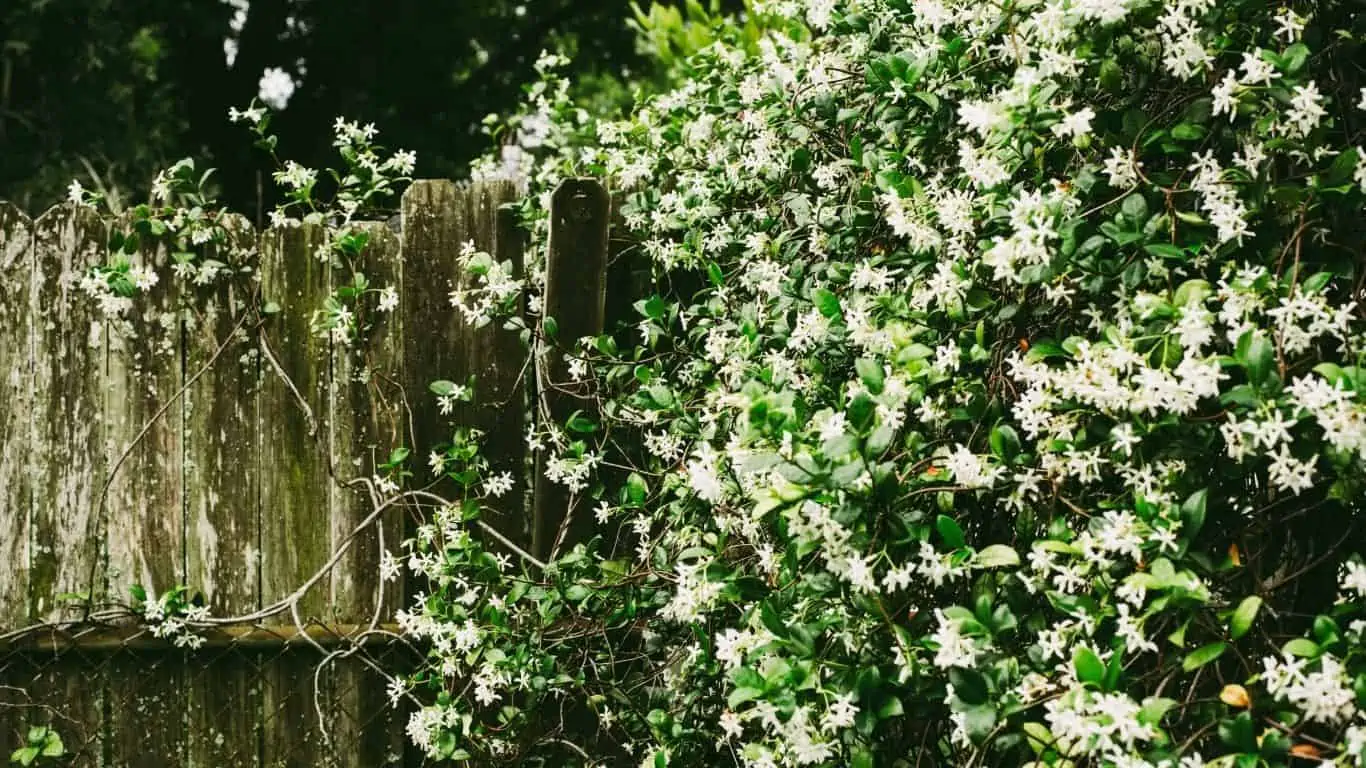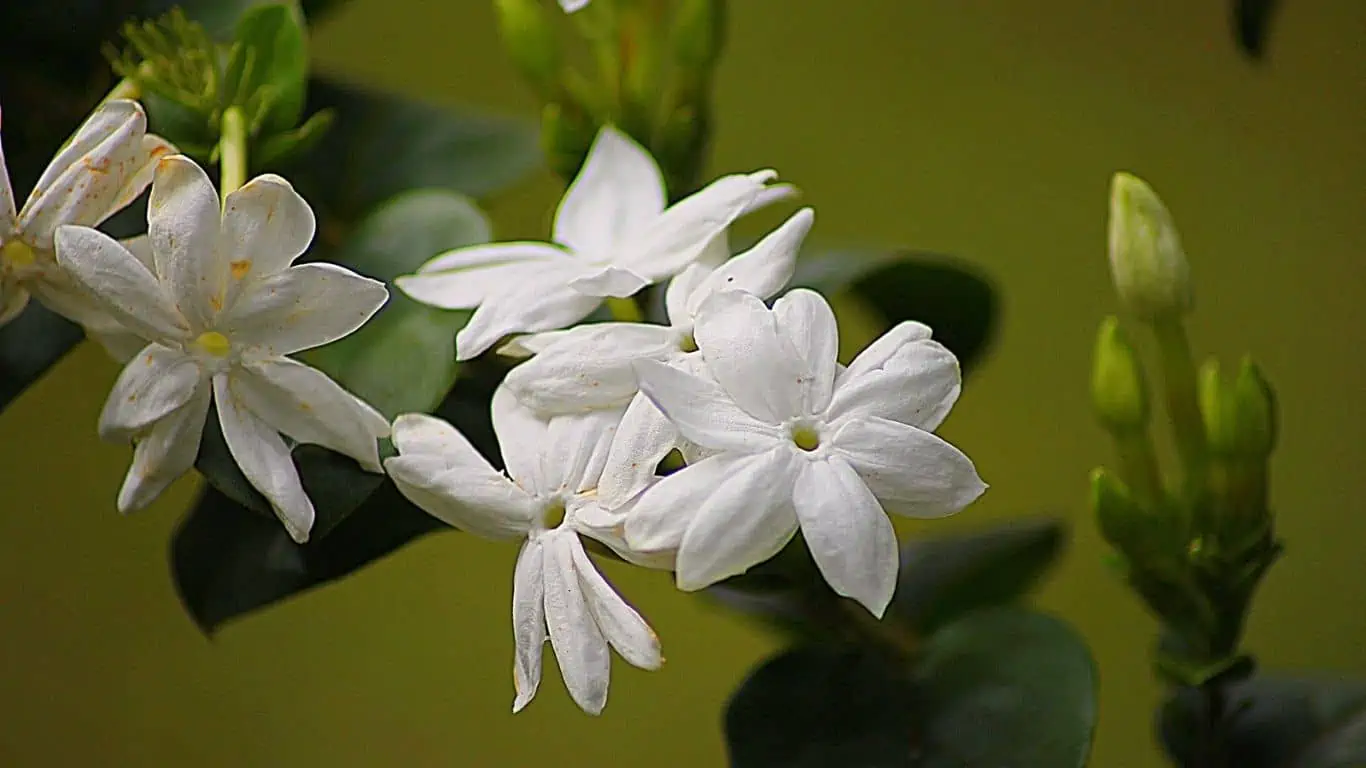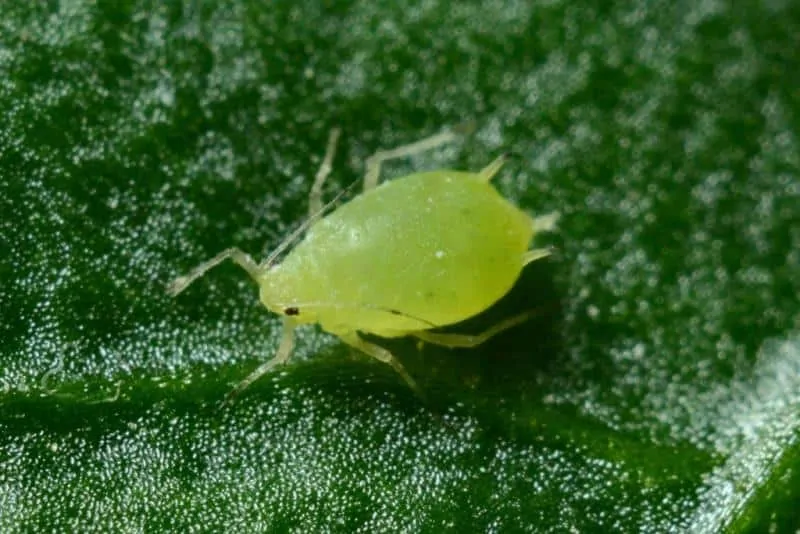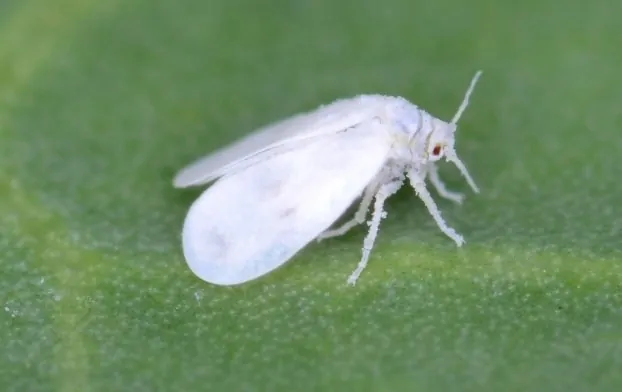Are you having trouble with your Orange jasmine plants? If Orange Jasmine Losing leaves then it’s time to act. Orange jasmine is a beautiful white bell shape flower. The botanical name of Orange Jasmine is Murraya Paniculata. It is not a true jasmine. Orange jasmine is a citrus plant and gets the name for those beautiful fragrant white flowers. Just like any citrus plant it also produces small red tangy fruits. Birds and chipmunks love these fruits.
Orange jasmine is an evergreen fast-growing shrub. It is ideal for a hedge garden in USDA hardiness zone 9b through 11. Murraya Paniculata is very easy to grow. Although the maintenance can become difficult as the plant is prone to some serious pests and diseases. These pests and diseases are the main cause of leaf drops in orange jasmine. Yellow and curling of leaves is a common sign of infestation in Murraya plants. They are most susceptible to common citrus pests. Therefore, have a regular check on the plant for any sign of infestation and treat it as soon as you find one.

Check out my previous post: How to Control Yellow Aphids on Jasmine?
Why does an Orange Jasmine lose its Leaves?
Losing a few leaves is normal for any plant. It can happen due to the maturity of the leaf. Old leaves fall and new leaves take their place to keep the orange jasmine evergreen. Orange jasmine plants also lose leaves once they are mature enough to fall. The space is soon occupied by new green leaves. It is a natural process of cleansing for these plants though they never drop all leaves at once.
Although if the Jasmine plant starts shedding leaves like a deciduous plant. Then there must be some problem with the plant. Inspect the plant carefully by observing stems and leaves even the underside of the leaves. If anything looks unnatural like a black spot, mold, or yellow patch then it’s an infestation. Get ready this is the time to act else you may not save the orange jasmine plants.
Identifying the problem is not a big deal. Regular checkup is sufficient to notice any nasty bug wandering around the jasmine plant. Once you find any known pests then start the treatment. Never wait for the infestation to worsen.
Why is my Murraya plant losing leaves?
Murraya plants are the best hedges for flower gardens. They are easy to grow and maintain. these hedges require well-drained healthy soil with a slightly acidic ph. These specific requirements sometimes cause problems for the plant itself. If the garden is not prepared to support the specific needs of Murraya or Orange Jasmine plants then it may harm the plant.

The Obvious sign of damage is a sudden leaf drop. Yellowing and dropping of leaves can also happen due to too much water in the soil. Overwatering and over-fertilization can put the plant in shock. It may lead to a lack of oxygen for the roots. This may result in the dropping of leaves.
If the soil conditions are fine then you should worry about pests and diseases. Common citrus pests can also damage the Orange jasmine plants. Severe pest infestation is the main cause of leaf drop in Murraya plants. Treat these bugs from the first day of identification and keep the hedges evergreen.
Check out: How to Choose a Jasmine Plant for Gardening?
What is the Cause of the Leaf drop in Orange Jasmine?
The natural dropping of leaves is common for any plant. Even Orange jasmine or Murraya Paniculata also drops old leaves and replaces them with new ones. This is a neutral maintenance procedure for every plant. The use of old leaf ends when it stops doing photosynthesis. That’s why the plant sheds old leaves and grows new ones to continue its life with uninterrupted photosynthesis.
Now if the leaf dropping is unnatural and happens suddenly as expected. Then you should check out the source of the problem. Two specific aspects can cause this problem in Orange jasmine plants. The first one is the Soil Conditions and the next is Pests and diseases.
Problem with Soil Conditions
If you are looking for soil conditions then make sure you maintain these conditions.
- Regular Watering. Maximum 1 inch per week per plant and let the soil dry before the next spell.
- Proper Drainage. Excess watering or watering can damage the root system. too much water around the root inhibits oxygen intake by the roots. This results in oxygen and other nutrient deficiency in the plant.
- Maintain Slight Acidic soil Ph. keep the soil slightly acidic for best growth in Orange jasmine plants. They prefer soil with 5.8-6.8ph. Anything above 6 and below 7 pHs is fine for Murray plants.
Imbalance in any of these requirements may cause leaf drops in Orange jasmine Plants. Soil condition and the ambient temperature with proper sunlight keep the Murraya hedges healthy and evergreen. If anything goes wrong then the plant will react by losing leaves. Leaves dropping due to soil conditions can be cured if treated in time. Once the plant loses its vigor to produce new leaves then it will die and you can’t save it.
You should worry about pests and plant diseases especially if the soil condition is alright.
Common Pests causing Leaf Drop in Orange Jasmine
Orange Jasmine or Murraya Paniculata plants are susceptible to common citrus pests. These pests can attack the leaves and tender buds. Leaf curling, wilting, Yellow patches, black mold, Scales, tip damage, and sudden leaf drop are the sign of pests and disease in Orange jasmine.
You can treat some of these problems in their early infestation. Although treatment of viral diseases is not possible in Orange jasmine. If it has any viral infection then you have to discard the plant for the sake of others.
you Orange jasmine may face problems with-
- Aphids
- Spider mites
- White Fly
- Asian Citrus Psyllids or Diaphorina citri
- Scales
- Wilt virus Fusarium
- Huanglongbing (HLB virus)
Aphids
Aphids are transparent bugs that feed on the plant sap. they came in all shades of Rainbow. They are just 1/8th of an inch but their entire colony can damage a Jasmine Hedges within a week. Aphids lay eggs under the leaves and they like the dark moist spot to breed. These bugs can multiply quickly. They also produce honeydew that can cause black mold in the orange jasmine plant.

So if you find any aphid wandering around on your hedges. Then lookout for possible hideout under every leave. I know it’s difficult so once you find some then treat every plant without waiting any time.
Do you know-Common Pests and Diseases in Chilli Pepper Plants
Spider Mites
Spider mites are not real spiders. Instead, they are tiny bugs that feed on plant sap and create spider web-like patter under the leaf skin. they are not dangerous for the plant. Although if you ignore them then they can cause leaf drop problems. The orange jasmine plants may stop growing due to a lack of photosynthetic leaves.
Whitefly
Whitefly is also a sap-sucking insect. It can fly that’s why they are so dangerous for your Orange jasmine hedges. they are just 1/8th inch in size. they are not white instead the wax on their body and wings give them the glossy white coloring. This wax protects these bugs from common pests treatment. So acts fast and use all measures to keep these nasty bugs away from your Murraya plants.

Whitefly can cause orange jasmine to lose leaves – Yes, they can cause leaves to drop in Murraya plants.
Asian Citrus Psyllids or Diaphorina citri
Asian Citrus Psyllids or Diaphorina citri is a common citrus pest. It attacks many citrus plants including the orange jasmine. these bugs feed on the plant sap and secrete honeydew. They are just 1/8 of an inch but their ability to damage the plant is severe.
Psyllid infection may result in curling and deformation of buds and new branch tips. the leaves may turn pale yellow and drop before maturity. These bugs are not only the problem for jasmine plants. They carry several bacteria and viruses that can do serious damage to the infected plants. If you find these bugs hard to treat then think of the viral infection that is incurable in orange jasmine. Always treat these bugs as soon as possible.
Scales
All types of scales can infect an Orange Jasmine plant. Though the Black citrus scale is the most common one. It attacks the leaves and feeds on plant sap. The infestation can grow from leaves to stem to the root. These bugs can cover the entire leaf and stop photosynthesis. It is usually not dangerous in the early days. But if you ignore the problem then the plant may lose its vigor with time to fight the damage. Scales can force Orange Jasmine Lose leaves.
These nasty sticky bugs also secrete honeydew that can attract scoot mold or black fungus. It can be deadly for the plant. This fungus can eat the plant from inside leaving just the hedges skeleton. So treat the scale and keep the Murraya plants clean and safe.
Wilt Disease
Wilting in Orange jasmine can happen due to bacterial as well as viral infections. Usually, these infections are carried by other pests like aphids, whitefly or Psyllids. therefore keep an eye on those pests and protect the plant before it’s too late.
Wilting can also happen due to infected soil or too much water around the roots. If this is the case then add fungicide to the soil and avoid overwatering. Severely infected orange jasmine plants are incurable and you have to discard the plants.
Check out: How to get Maximum Bloom in Jasmine Plants?
Huanglongbing (HLB virus)
Huanglongbing or the HLB virus is a deadly plant virus that attacks citrus plants. Asian psyllid is the main carrier of this devastating virus. the sign of infestation includes yellow patches on the leaves. Curling and forming of tips and drooping of buds. The infected plant will start drooping leaves and then the stems will turn yellow and eventually die. The symptoms look similar to zink and boron deficiency but the sudden curl and stunted growth are serious identification of HLB.
You cannot treat an Orange Jasmine plant infected with Huanglongbing. Once a plant shows the sign of HLB, you have to discard and burn it before the disease can spread to other plants in the garden.
How to Solve Leaf Drop problem in Orange Jasmine?
Start with regulating water supply. keep the soil soft light and aerated. Water only when the topsoil feels dry and tries to keep the roots hydrated.
Place the JAsmine plant in full sun at least for 6 hours every day. Direct bright sunlight will check the growth of common pests like aphids and whiteflies.
If there is a pest infestation then start the treatment with natural predators. You can introduce parasitic wasps to control scales. Spider, lacewing, and hoverflies can control Asian citrus psyllid.
Use oil and soap water for the general treatment of sap-sucking insects. Neem oil is also helpful for distracting bugs away from orange jasmine plants.
All-purpose pesticides or any biopesticide can help in controlling the pests population in the flower garden. You can also use chemical pesticides if the problem persists.
Keep in mind once a jasmine plant gets severely infected with a bacterial or viral disease then you can’t save it. You have to discard and burn the plant before it can infect others.
